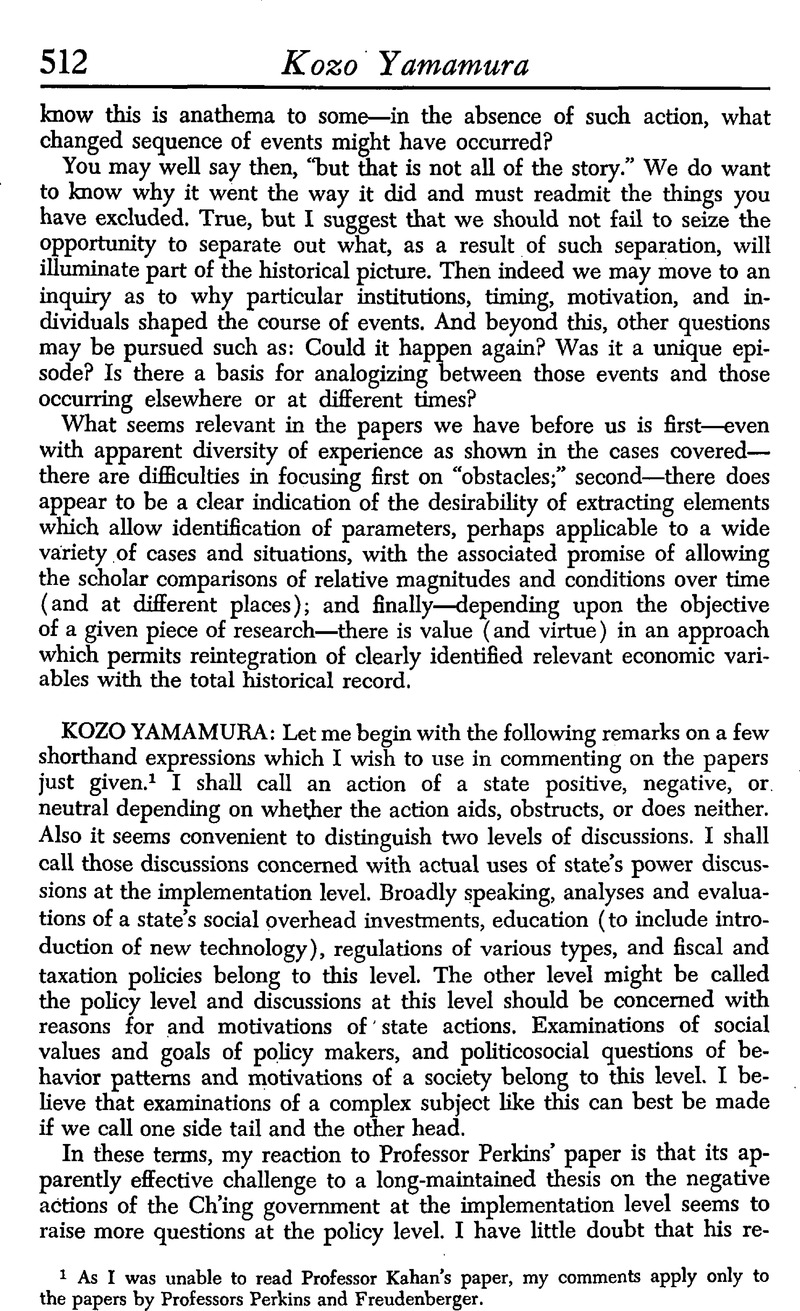No CrossRef data available.
Published online by Cambridge University Press: 03 February 2011

1 As I was unable to read Professor Kahan's paper, my comments apply only to the papers by Professors Perkins and Freudenberger.
2 Freudenberger, H., “The Woollen-Goods Industry of the Habsburg Monarchy in the Eighteenth Century: A Case Study in Development,” Journal Of Economic History, XX (09. 1960).Google Scholar
3 I refer to the cotton spinning mill operated by Denhichi Ito. His was one of the ten mills which began, in 1879, with aids (credit to buy spindles and technical advice) from the government. See: Kinukawa, Taichi, ed., Ito Denhichio [The venerable Denhichi Ito] (Tokyo: An Association for Ito Denhichi's Biography, 1936)Google Scholar.
4 See, for example, my study on the rise of the House of Mitsubishi in “The Founding of Mitsubishi: A Case Study in Japanese Business History,” The Business History Review, XLI (07 1967)Google Scholar.
5 Landes, David S., “Japan and Europe: Contrasts in Industrialization,” in Lockwood, W. W., ed., The State and Economic Enterprise in Japan (Princeton: Princeton University Press, 1965), pp. 93–182.Google Scholar
6 Feuerwerker, Albert, China's Early Industrialization (Cambridge: Harvard University Press, 1958). His discussions of the Kuan-tu Shang-pan system [Official supervision and merchant management] and his excellent appraisal of the life of Sheng Hsuan-huai (1844-1916) are examples of what I have in mind.CrossRefGoogle Scholar
7 One of the best recent examples of clearly formulated examination of government actions at the implementation level, covering all four areas stated earlier in the text, is found in H. Rosovsky, “Japan's Transition to Economic Growth, 1868-1885,” in Rosovsky, H., ed., Industrialization in Two Systems: Essays in Honor of Alexander Gerschenkron (New York: Wiley, 1966)Google Scholar.